Science Payloads for FORMOSAT-8 First Publicly Shown at the “90: A Story of NCKU Space” Exhibition
Written by Hsu Tsu-Yueh. Image credit to Hsu Chia-Hao.
National Cheng Kung University holds the exhibition “90: A Story of NCKU Space” as the university celebrates its 90th anniversary and the National Space Organization celebrates its 30th anniversary. The opening of the exhibition on December 17 took place on the first floor of the Science Teaching Building, showing the science payloads that NCKU contributed to the FORMOSAT-8, Dual-band Imager of Atmospheric Transient (DIAT) and Electron Temperature and Density Probe (TeNeP). Vice President Lai Ching-Te returned to his alma mater to attend the opening of the exhibition.
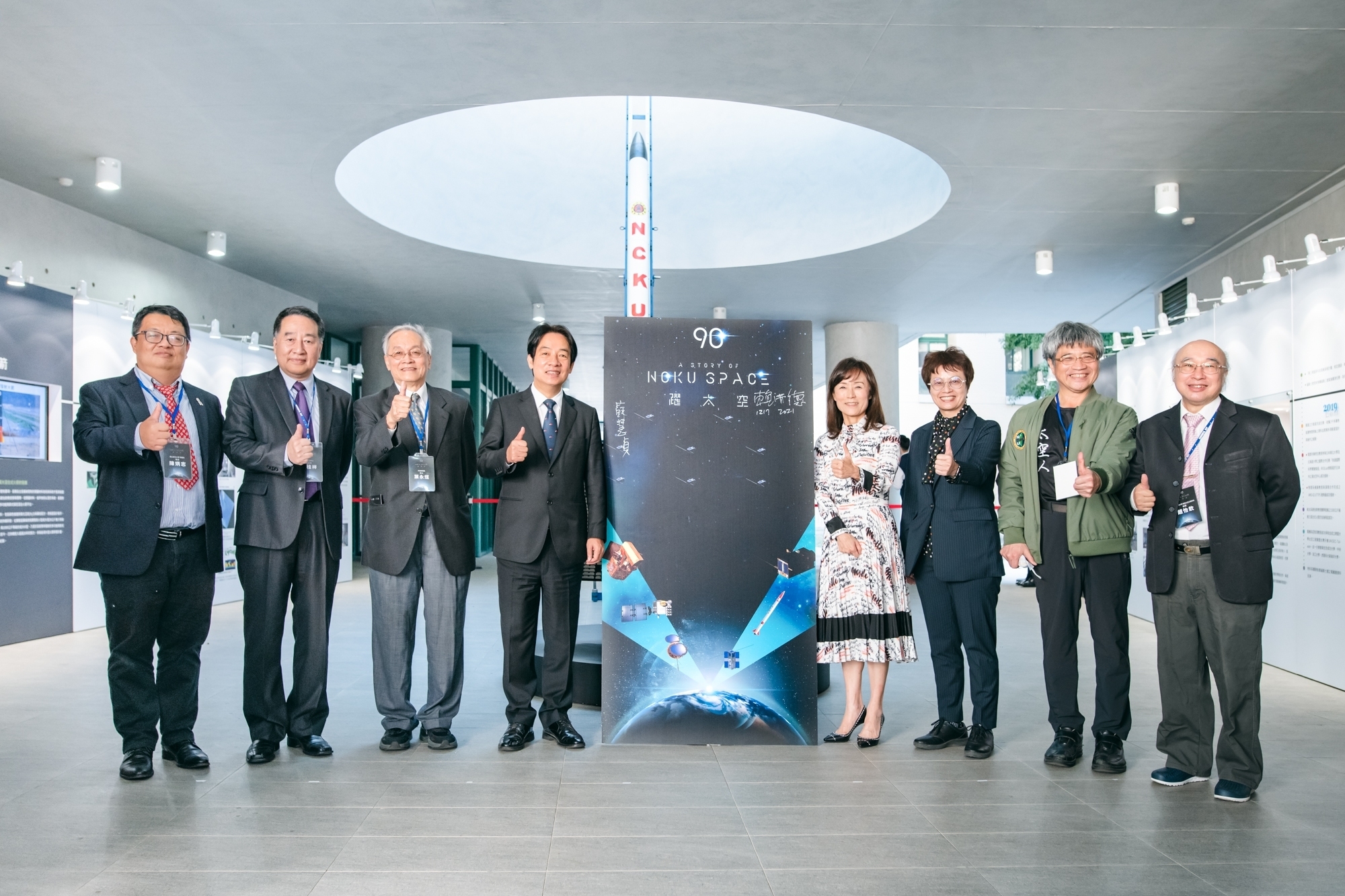
The exhibition “90: A Story of NCKU Space” opened on December 17
NCKU plays a crucial role in Taiwan’s space programs. Currently, the NCKU team is responsible for the research and manufacturing of the science payloads DIAT and TeNeP for FORMOSAT-8, one of the priority missions from the 3rd phase of the “National Space Technology Long-Term Development Program” in Taiwan. This is the first time the engineering model is publicly demonstrated since the team began working on its development in September of 2020. Bing-Chih Chen, Professor at NCKU Department of Physics and the principal investigator of the program, expressed that the payloads are jointly developed via efforts by teams from NCKU Department of Physics, Department of Earth Sciences, and Department of Aeronautics and Astronautics, as well as various companies in Taiwan including Aerospace Industrial Development Corporation. In the future, the technology could be applied to research on lightnings and ionosphere.
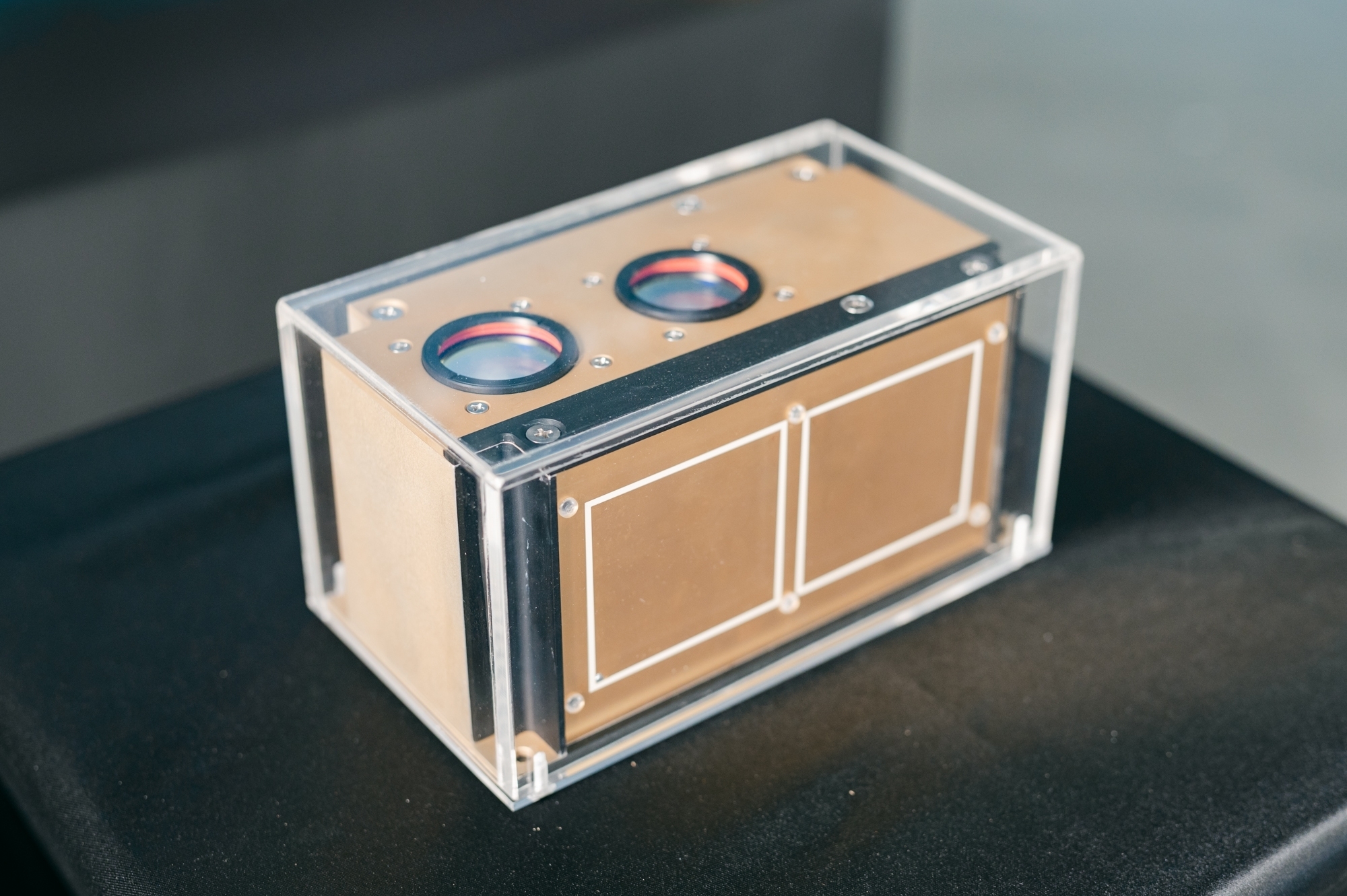
Engineering model of the Dual-band Imager of Atmospheric Transient (DIAT) and Electron Temperature and Density Probe (TeNeP)
“Humans have always dreamed of exploring the space and Taiwan should embrace the coming space era with boosting Taiwan space industries as our common goal.” Lai Ching-Te said, “The next decade will be a crucial period as each nation strives for opportunities to enter the space, and Taiwan is not to be left behind.” He expressed his pleasure to return to his alma mater and to see the university take on important roles for the FORMOSAT-8. He expressed that NCKU is the most involved university during Taiwan’s efforts to enter the new space era, and NCKU has produced fruitful results. He wished that NCKU will continue to make contributions to the nation’s industry and the international community.
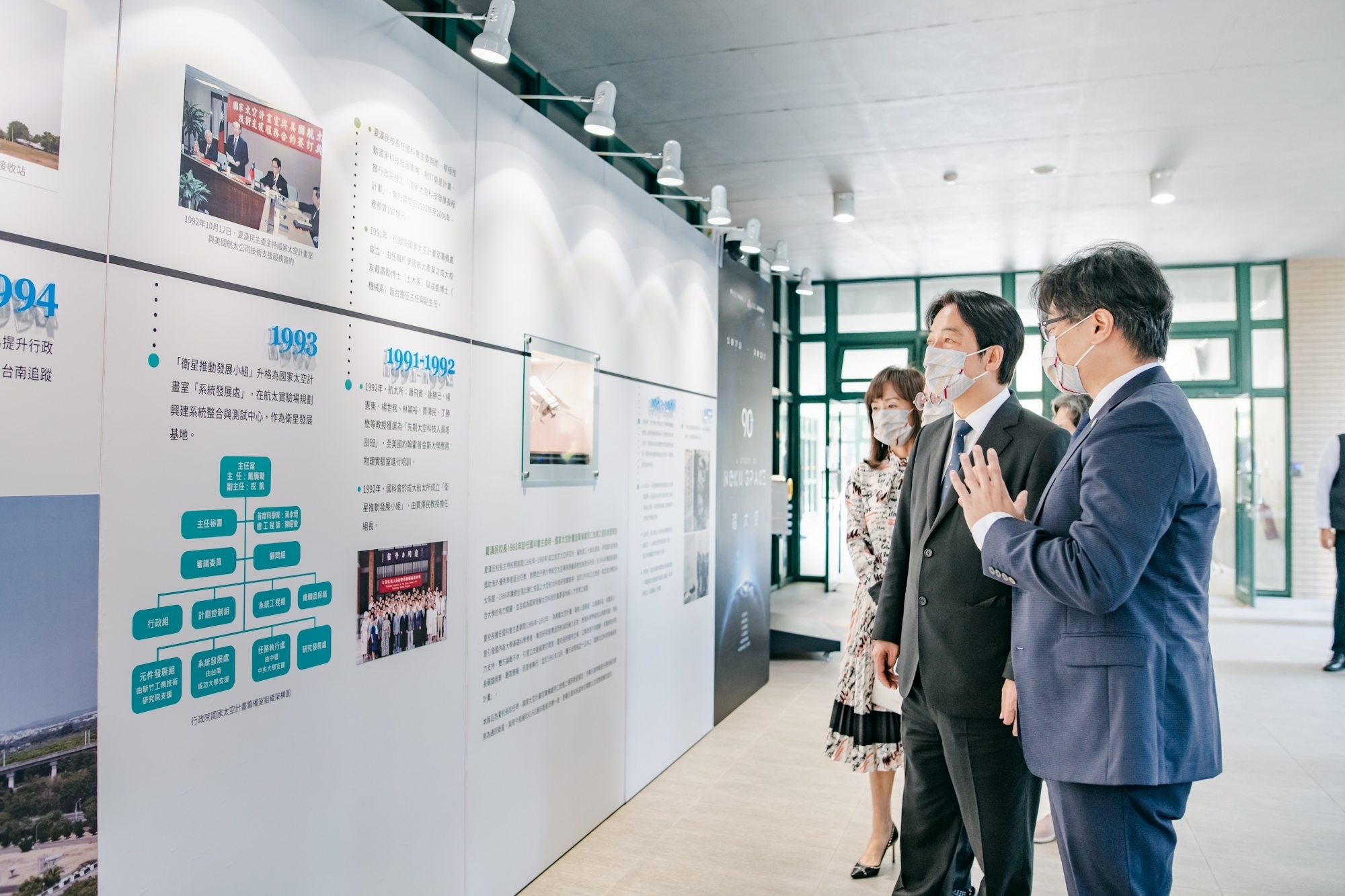
Vice President Lai Ching-Te returned to his alma mater to attend the opening of the exhibition “90: A Story of NCKU Space”
“As a member of the university, it is my privilege to give support and affirmations to the colleagues working in this field.” Huey-Jen Jenny Su, president of NCKU, was grateful that former president Han-Min Hsia had stood firm against oppositions in the past and pushed forward with prospective works. “I am thankful for his determination and courage to walk an untraveled path.” Su emphasized that the priority for a university should be supporting unyielding curiosity and the pursuit of truth. Space science, as a gateway to a new future for human, is worthy of continuous research.
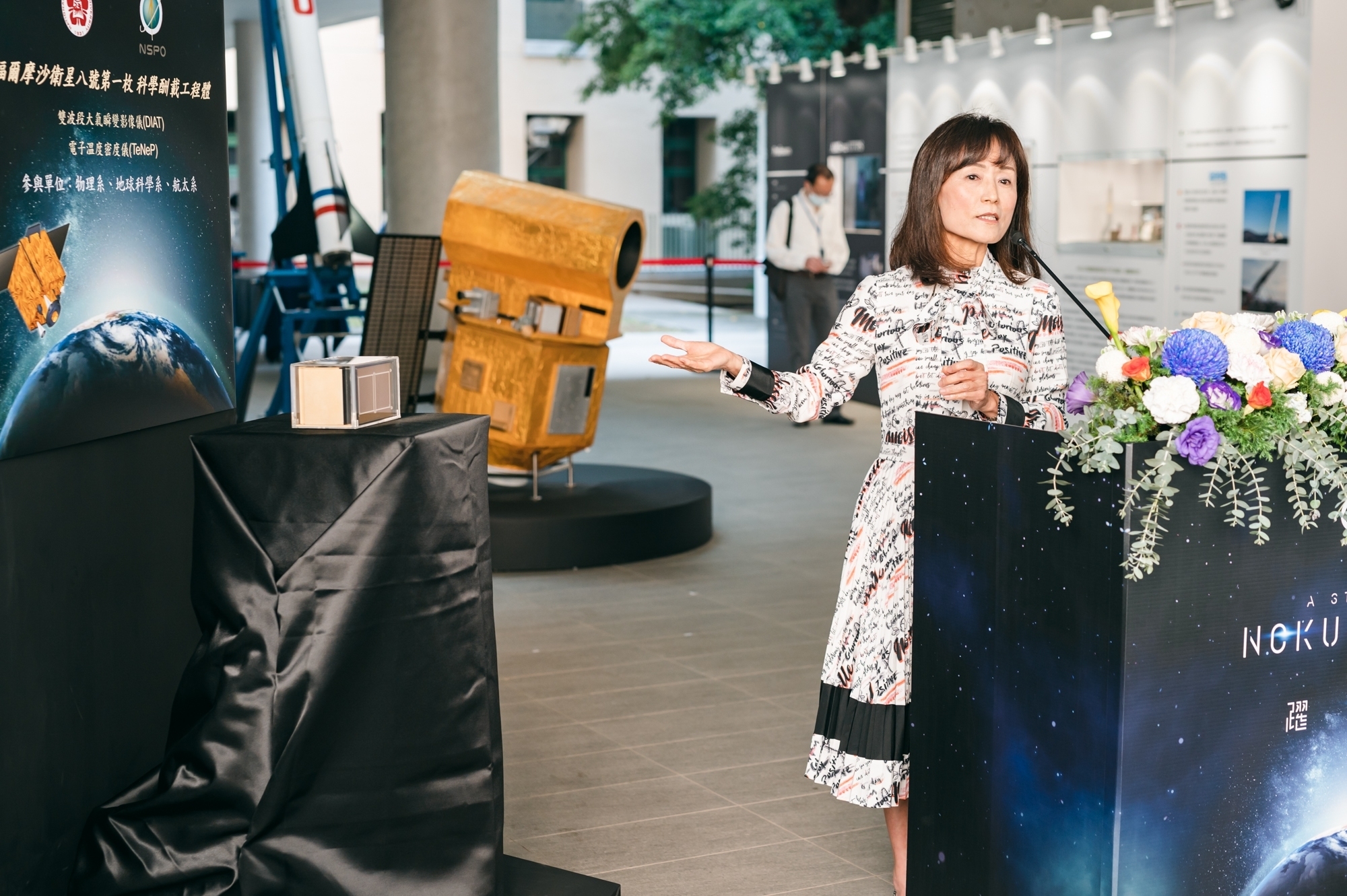
Huey-Jen Su, president of NCKU, expressed that the priority for a university should be supporting unyielding curiosity and the pursuit of the truth
Former NCKU president Han-Min Hsia established the Institute of Aeronautics and Astronautics when he was in office during 1980-1988. The constructions of the teaching buildings and testing grounds for aeronautics were powerful assets that contributed to NCKU’s transformation to become a nurturing field for cultivating talents for the national space technologies. In addition, Han-Min Hsia put in a lot of effort to promote the national space programs when he was leading the National Science Council. Through the exhibition, spectators will be able to appreciate the historical contributions that former president Han-Min Hsia has made.
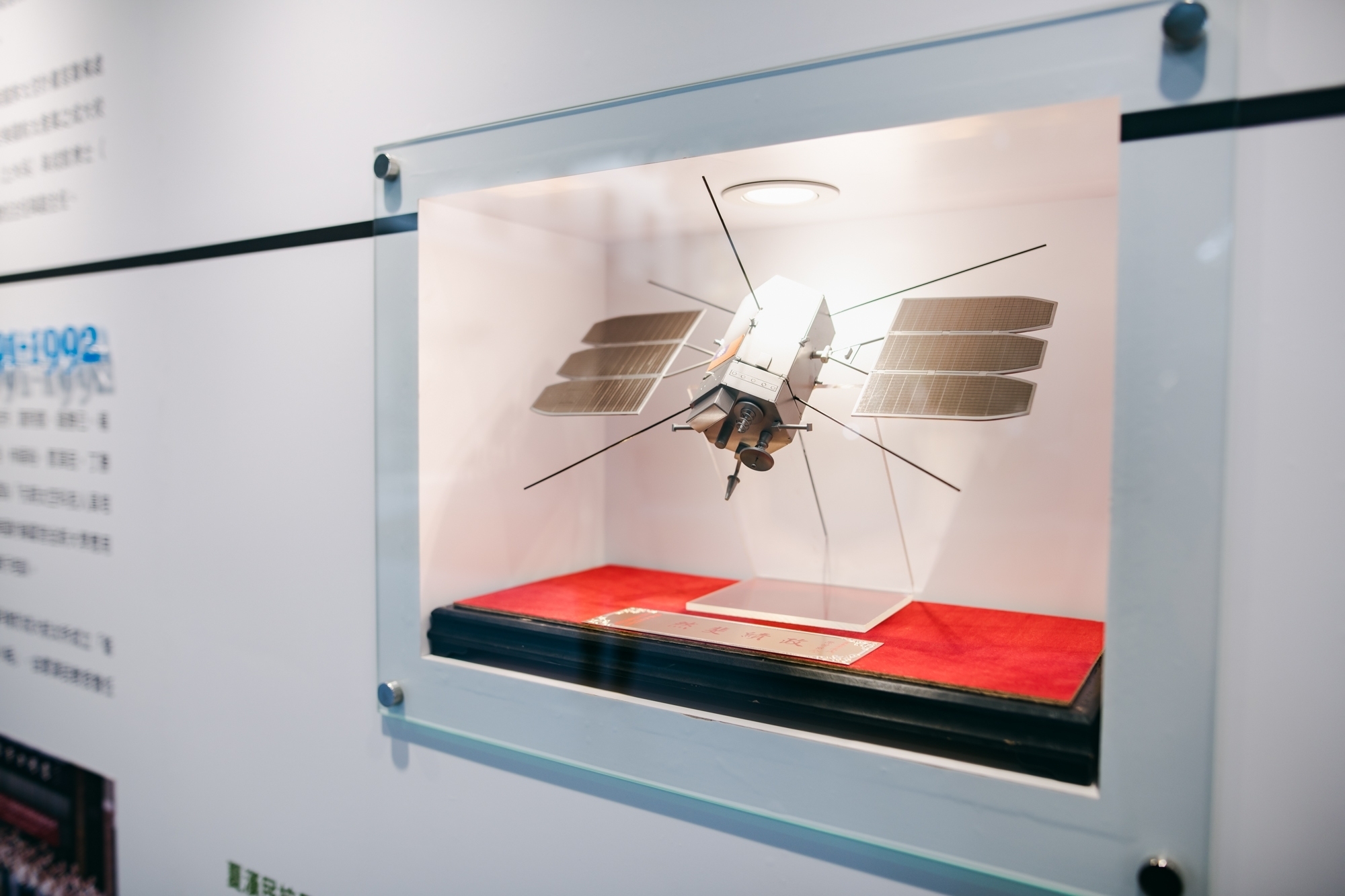
Model of satellite donated by the space program planning unit
The exhibition “90: A Story of NCKU Space” collects important results from NCKU Colleges of Science, Engineering, Electrical Engineering and Computer Science, during the period from 1972 to 2021. The exhibits include their work participating in national events such as research for satellites, rockets, and policy making, with 5 precious engineering models and 3 large exhibits.
Moreover, the exhibition demonstrates by year the contributions NCKU team has made in the space missions including the FORMOSAT-2, FORMOSAT-5, and FORMOSAT-7, as well as the Sounding Rocket Program and cross-national satellite collaborations. The numerous achievements show how resourceful NCKU is in terms of academia, industry, and government collaborations, and that NCKU is crucial in helping Taiwan gain international recognition through the FORMOSAT programs.
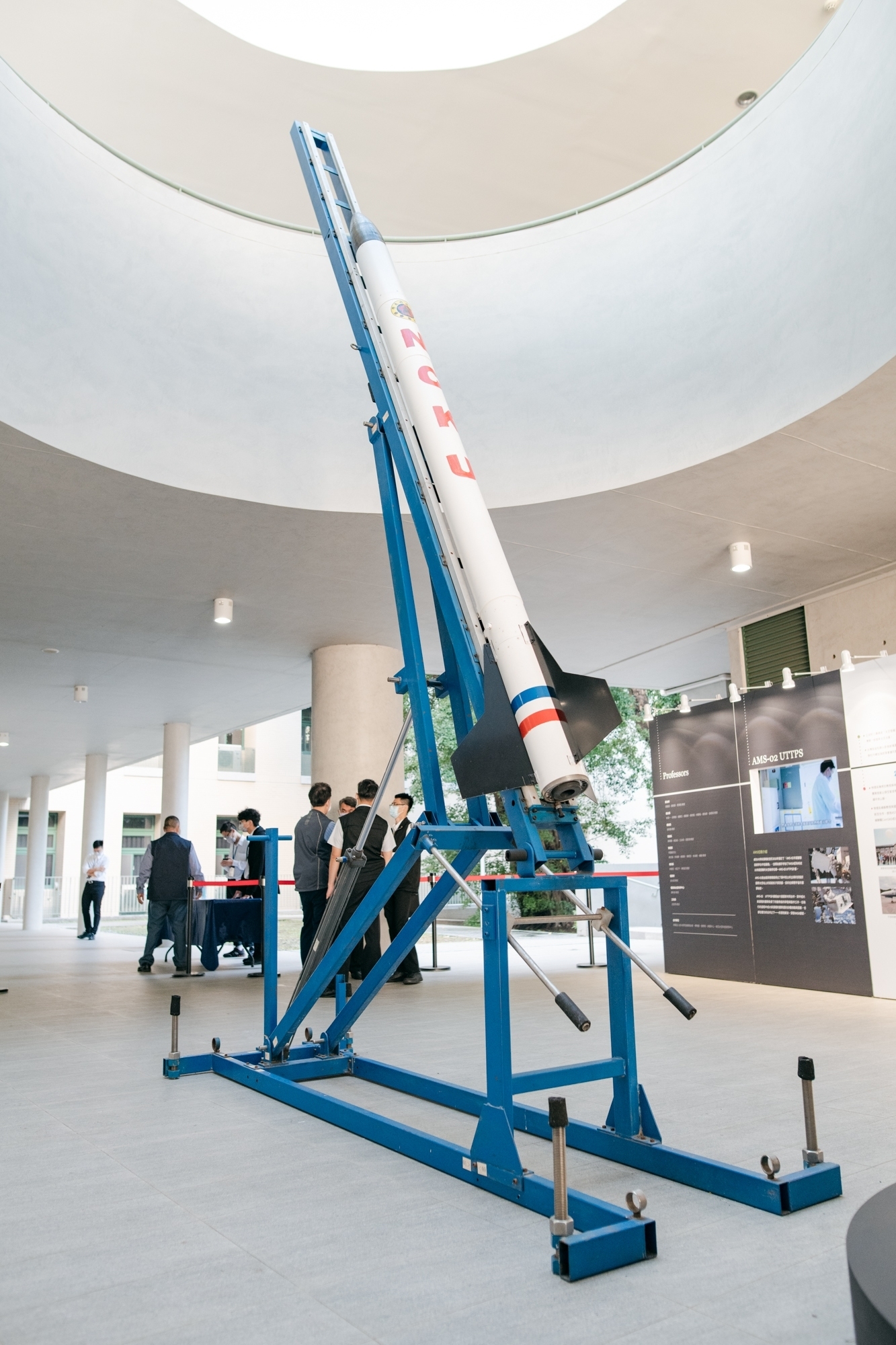
The original Sounding Rocket
Provider:
News Center
Date:
2021-12-17